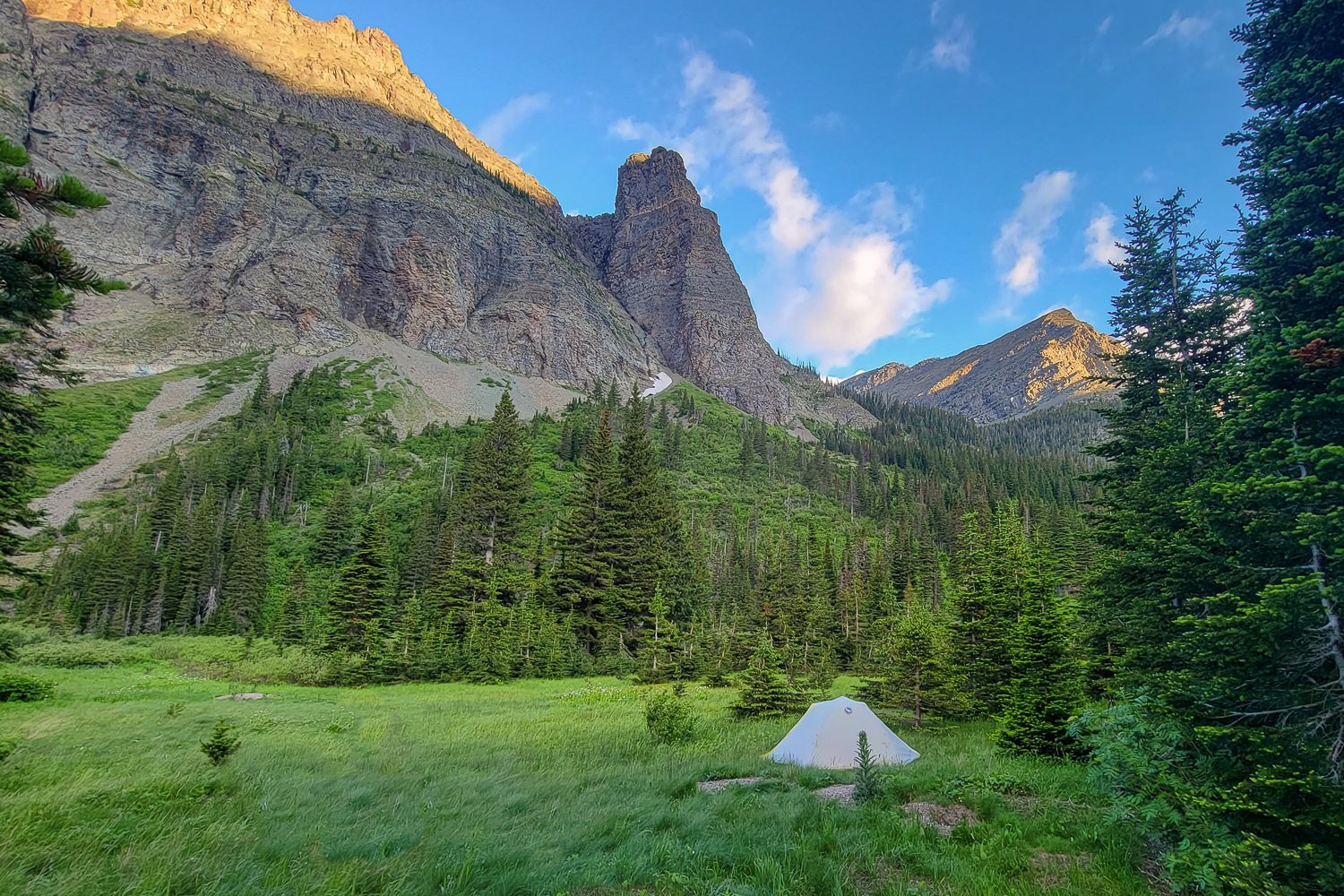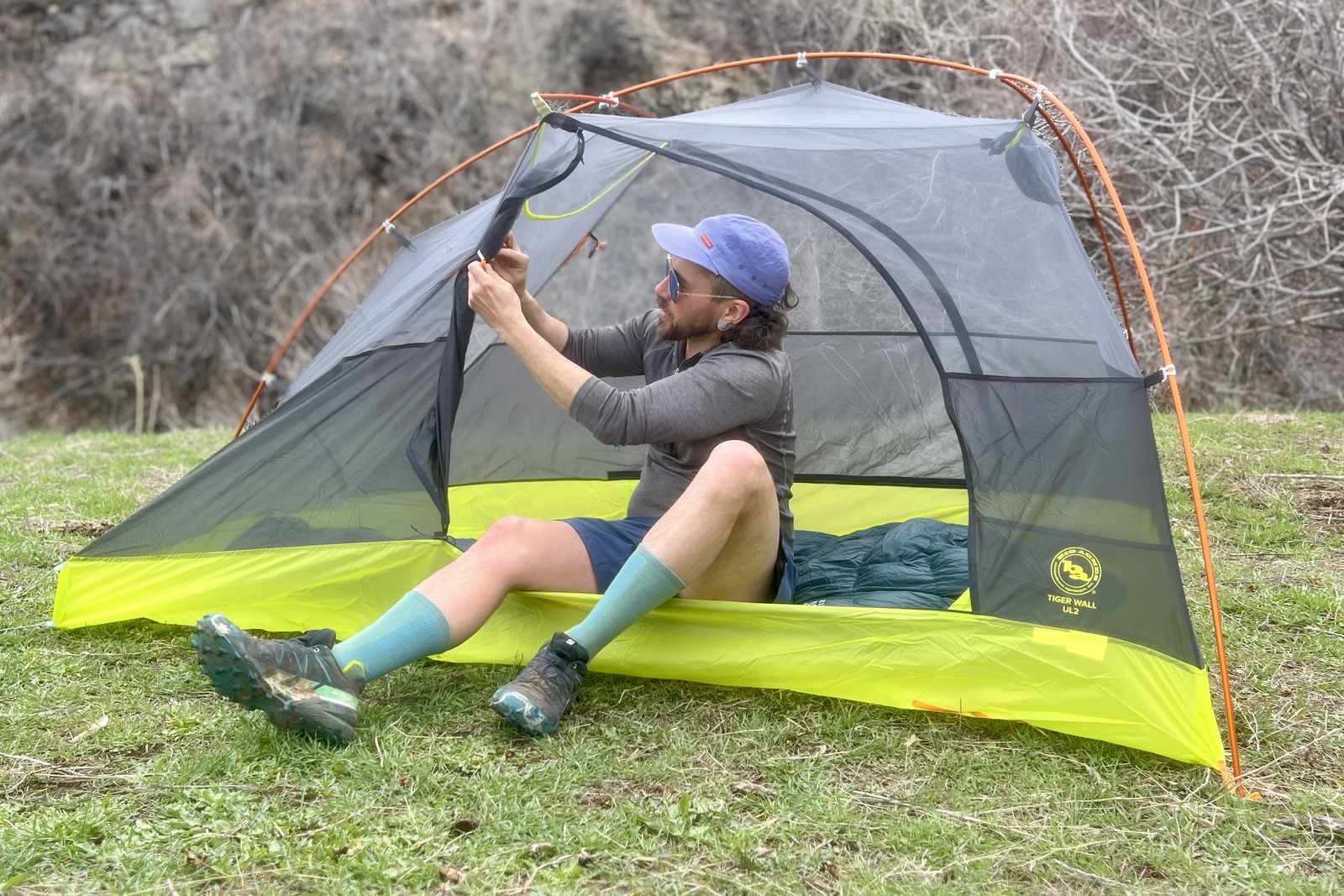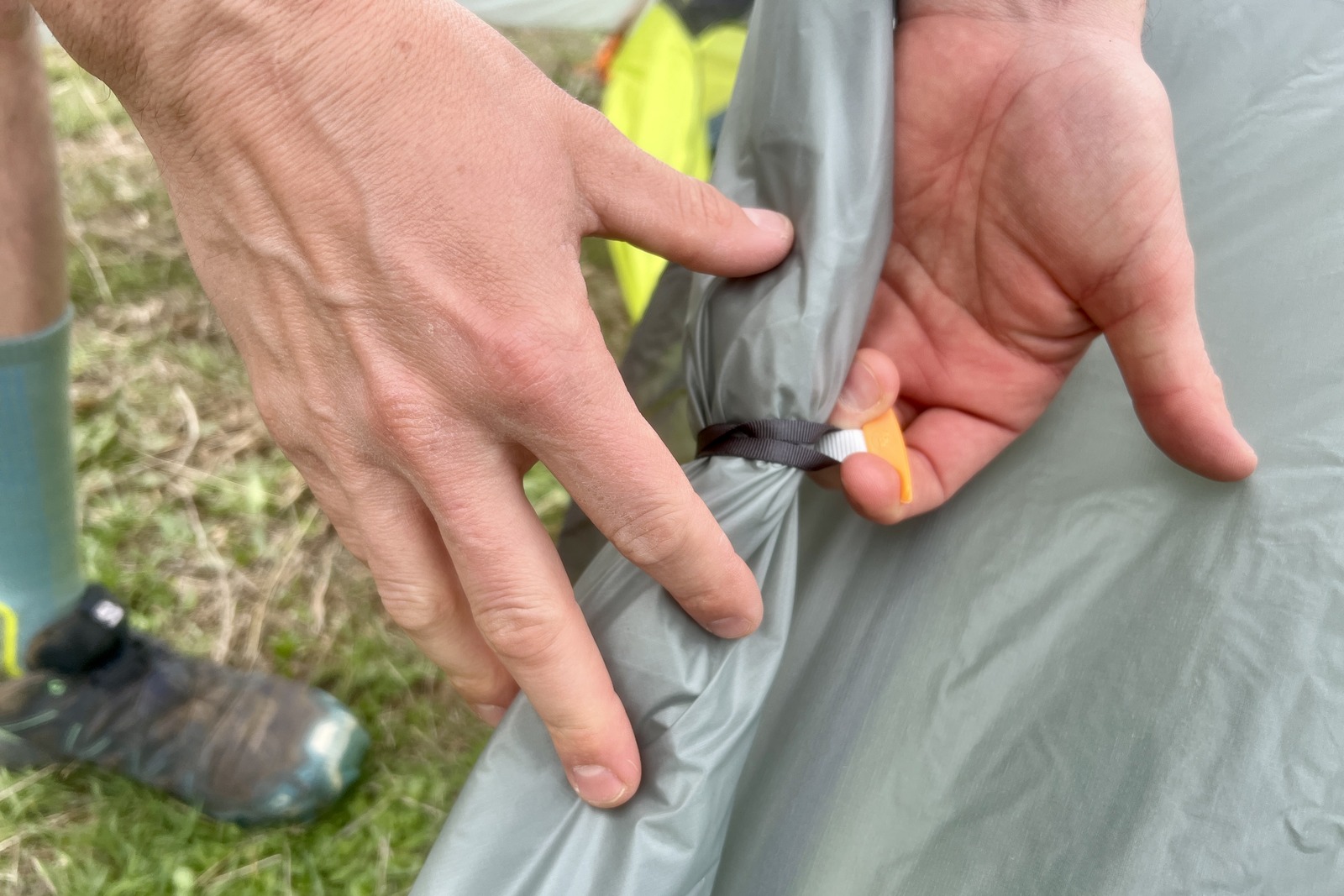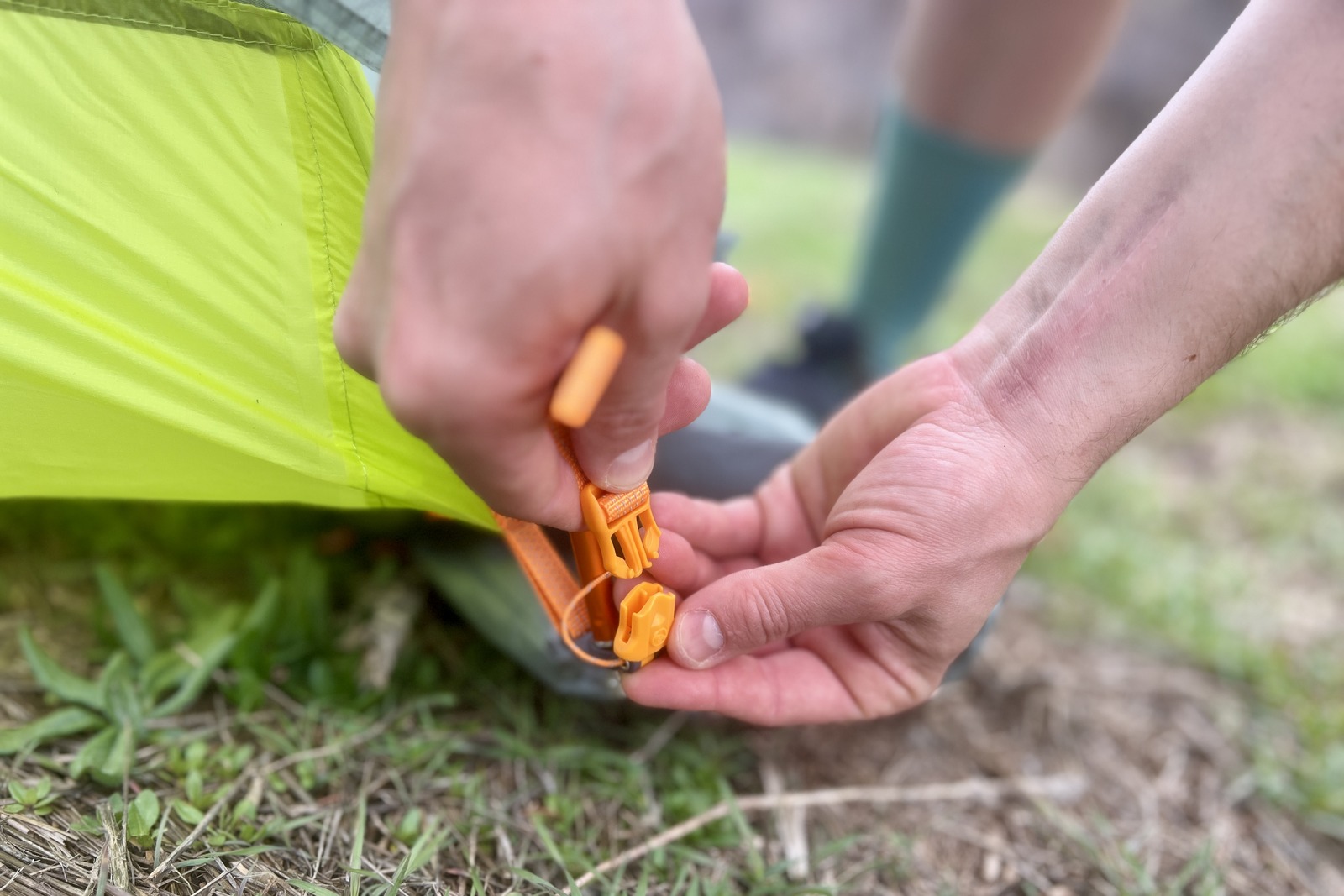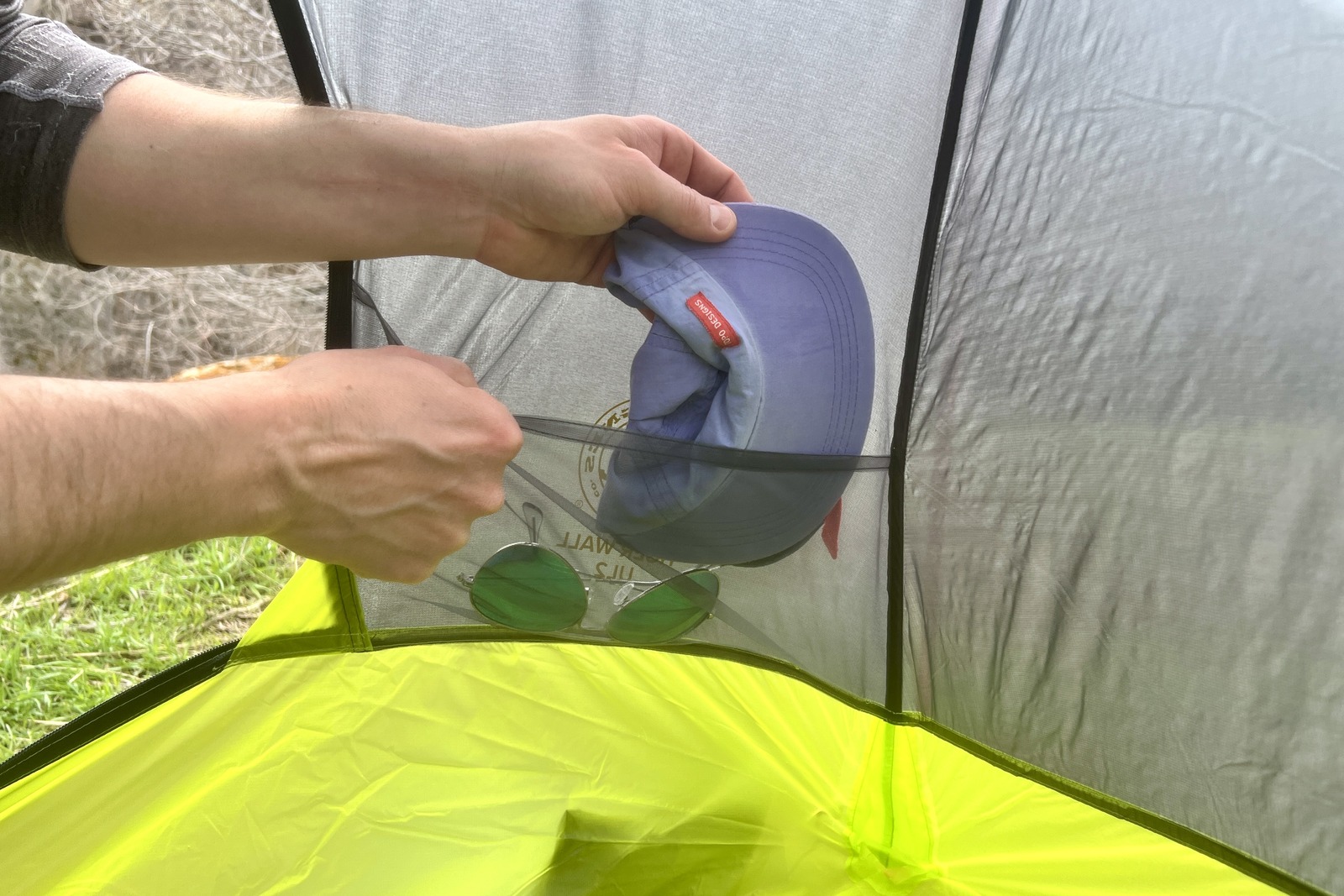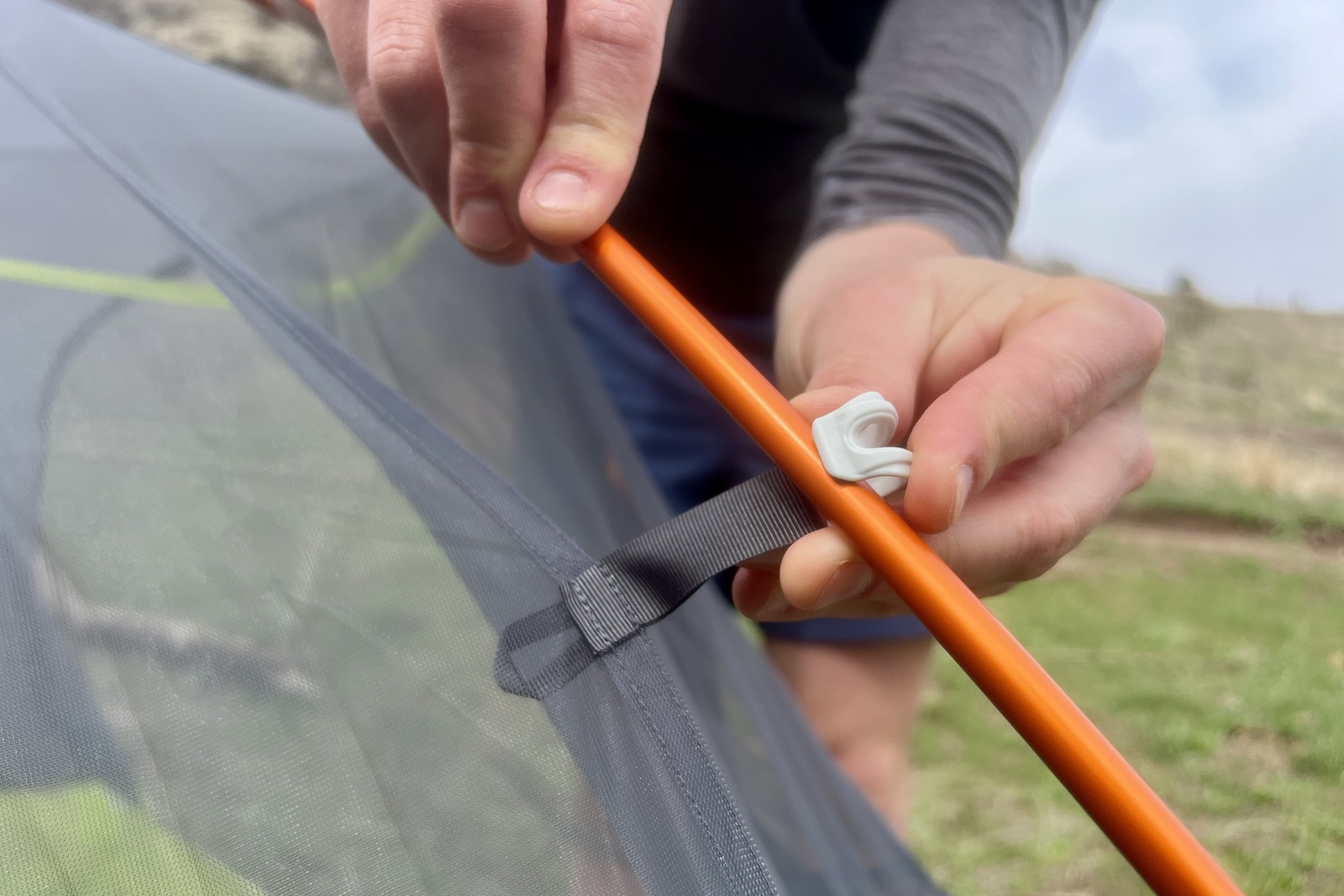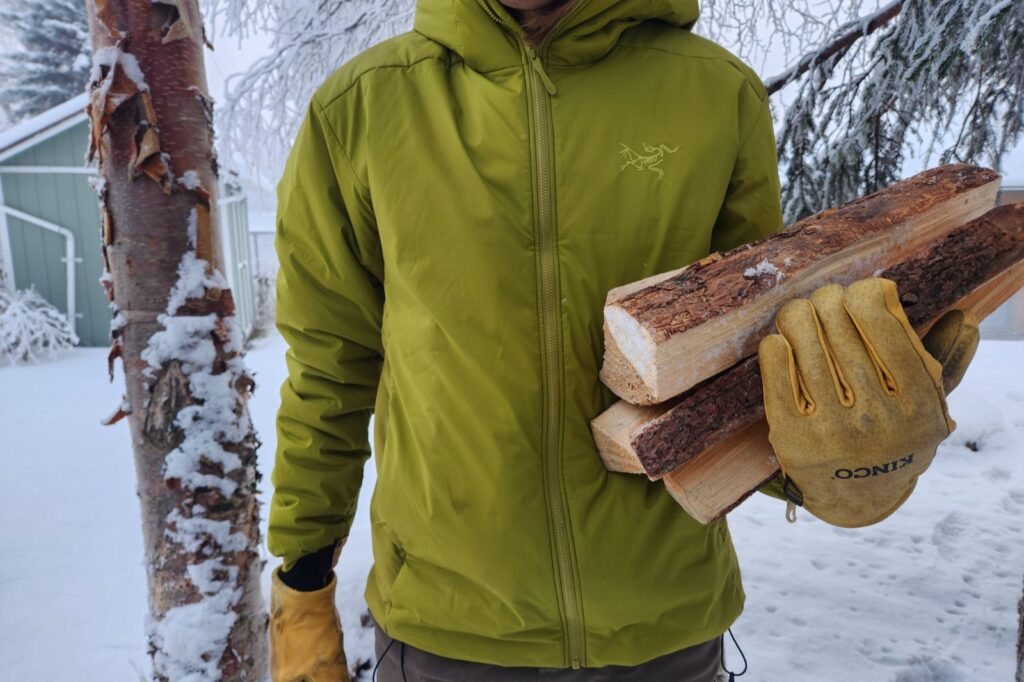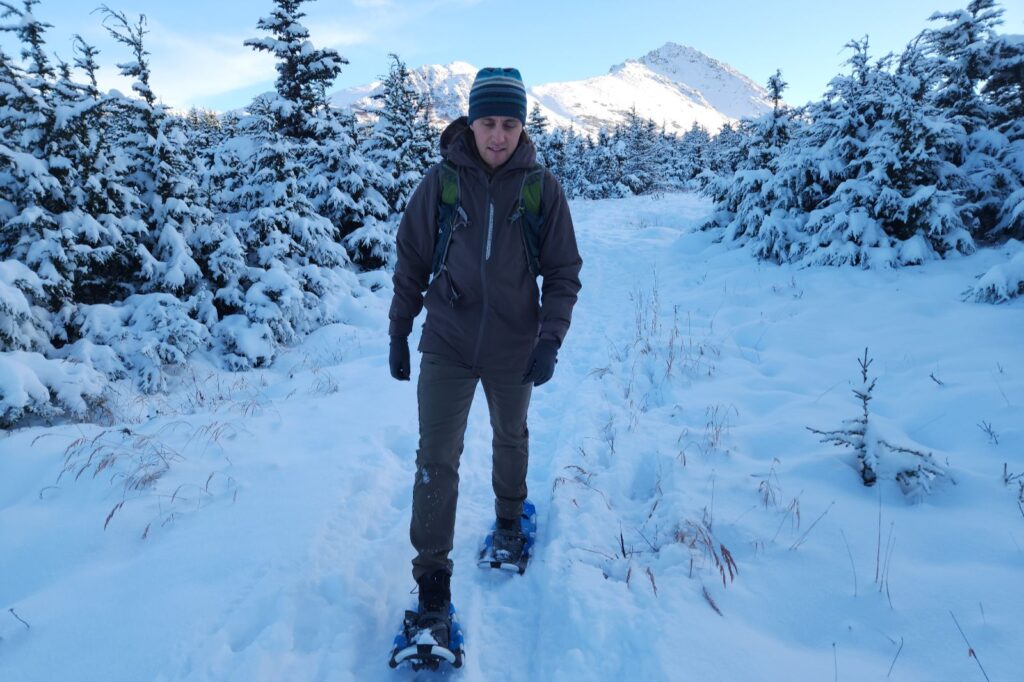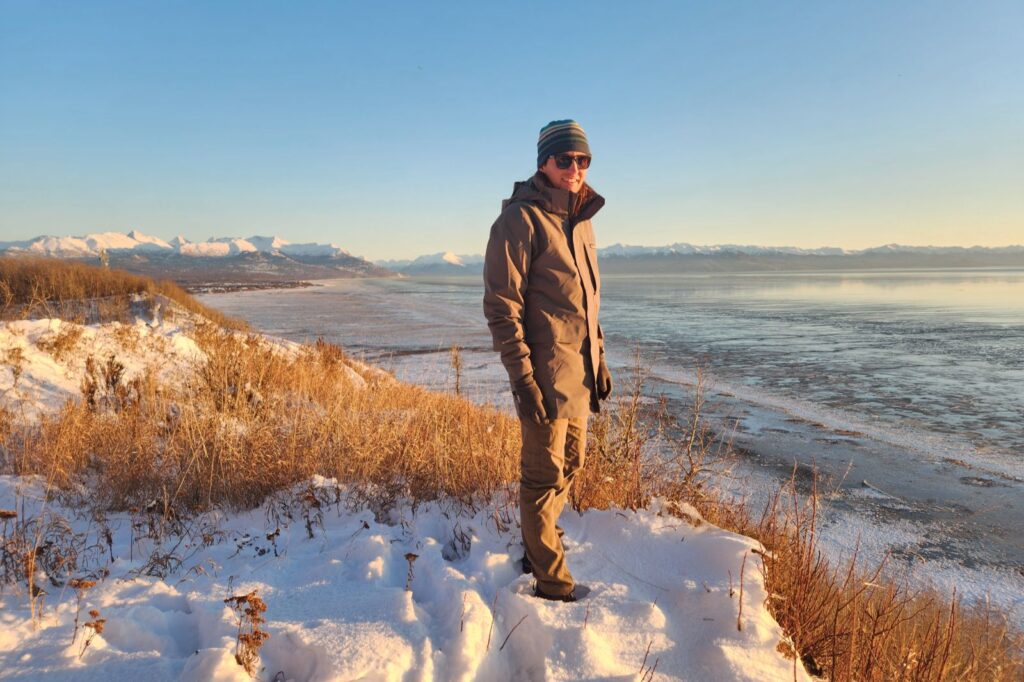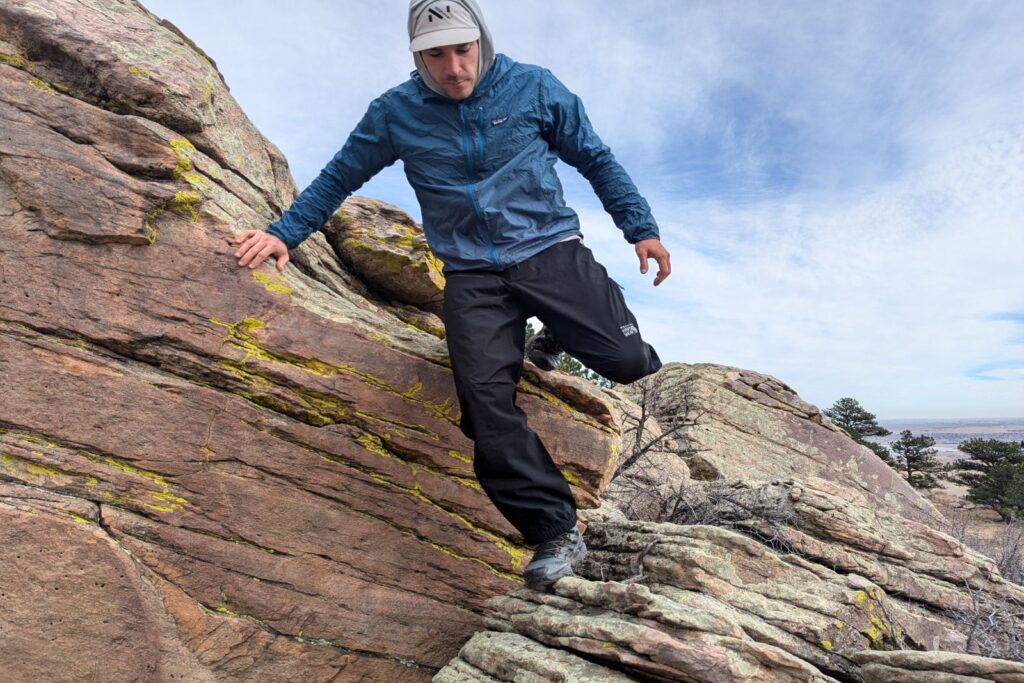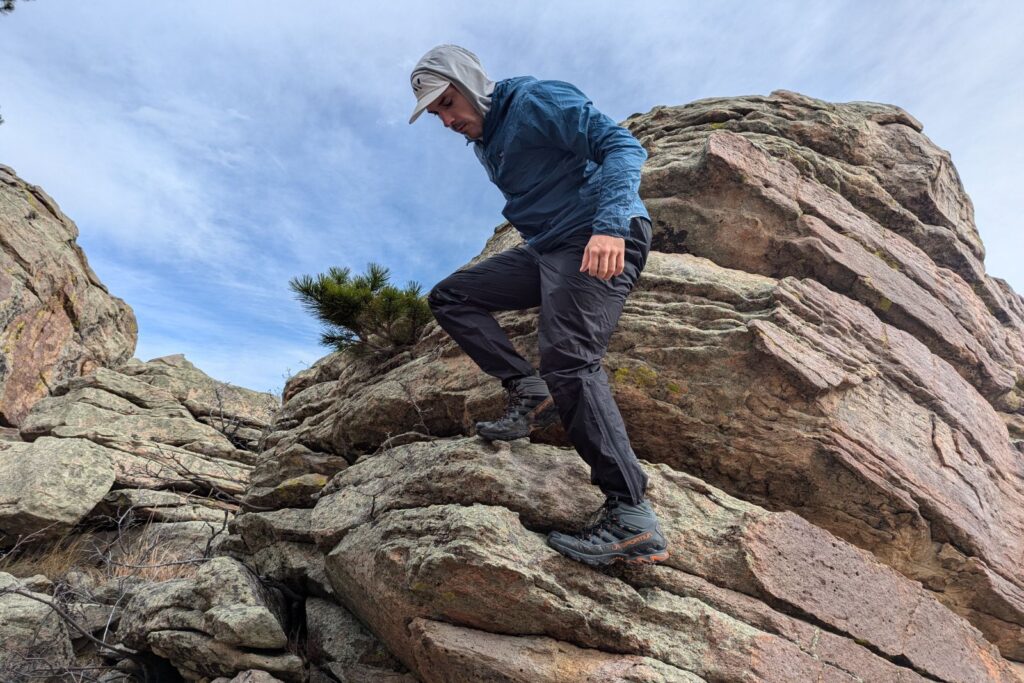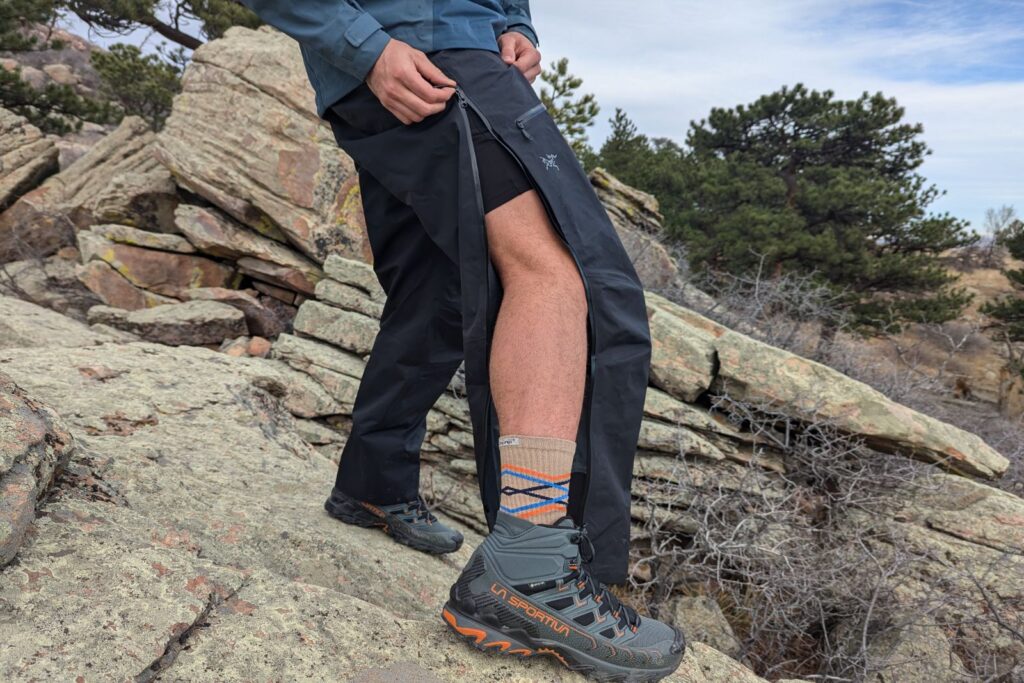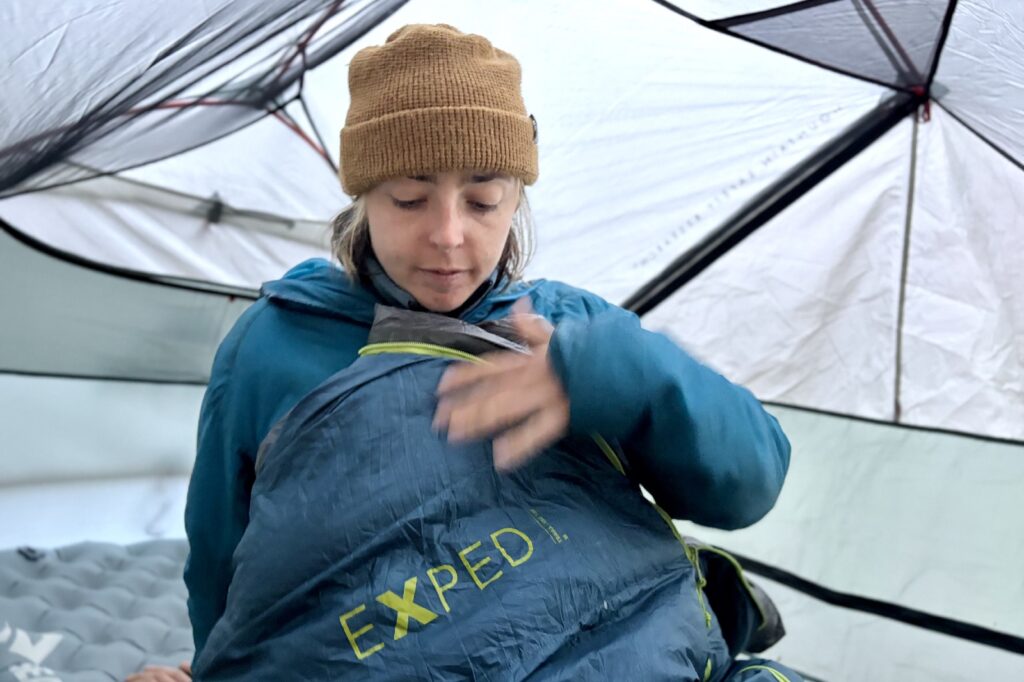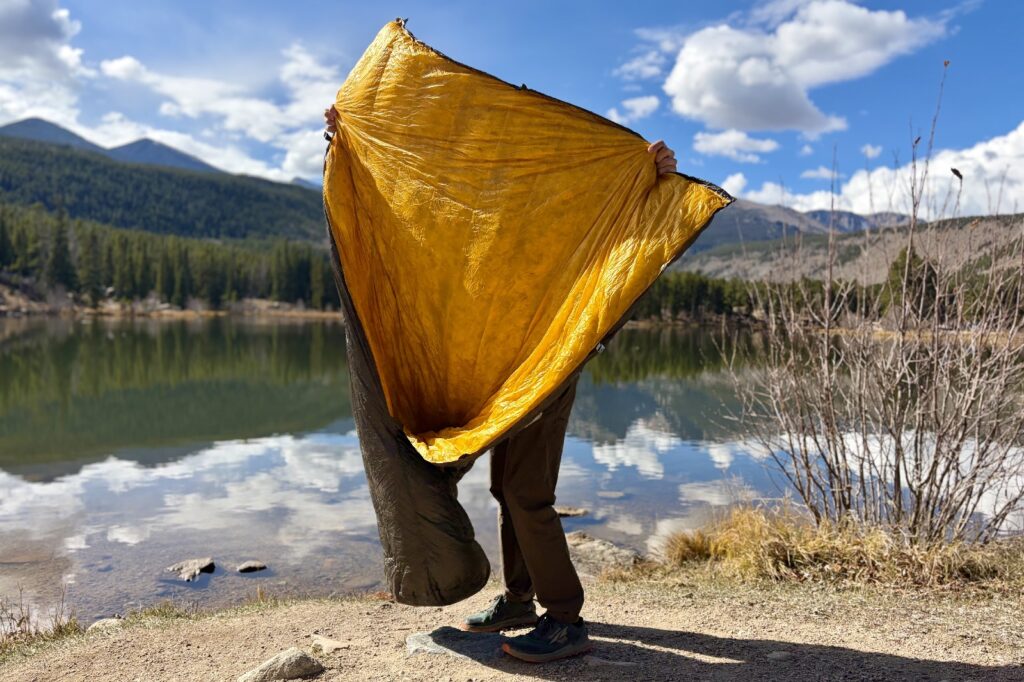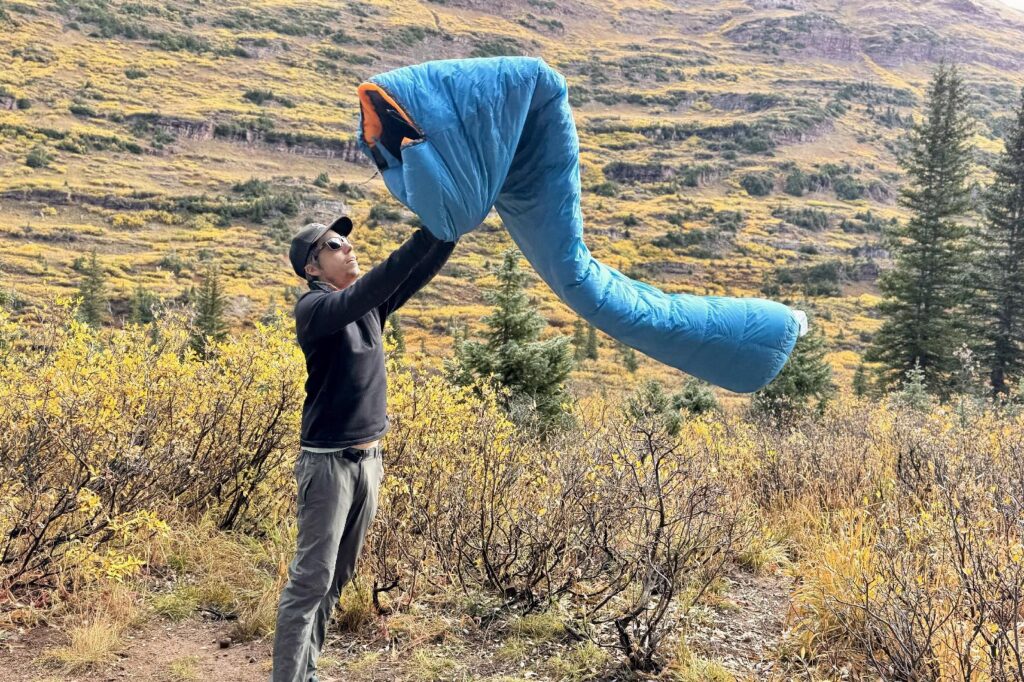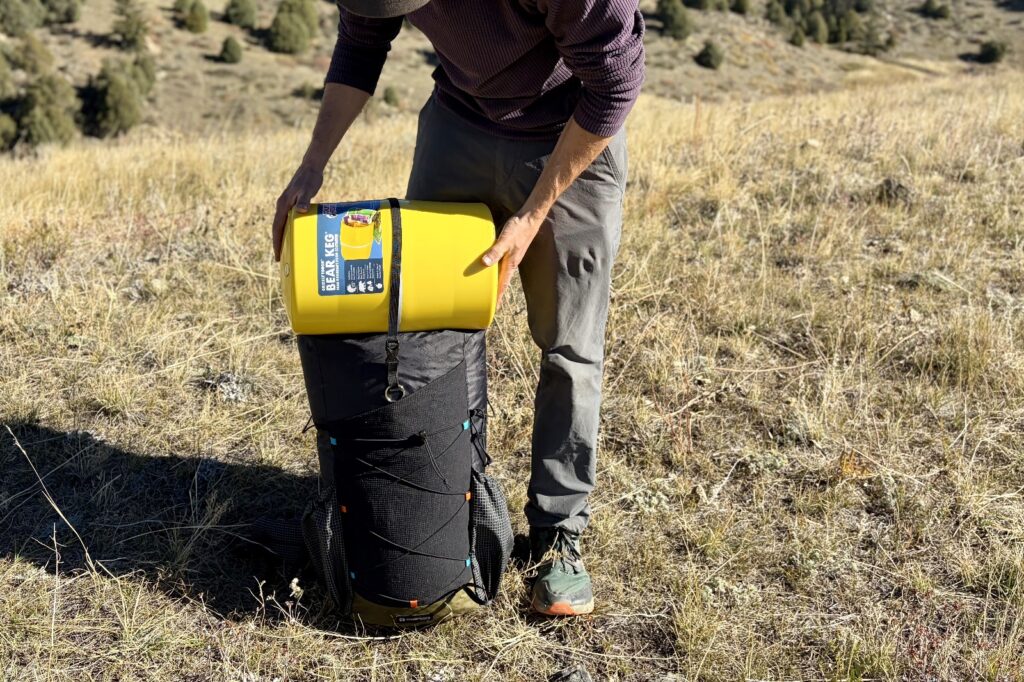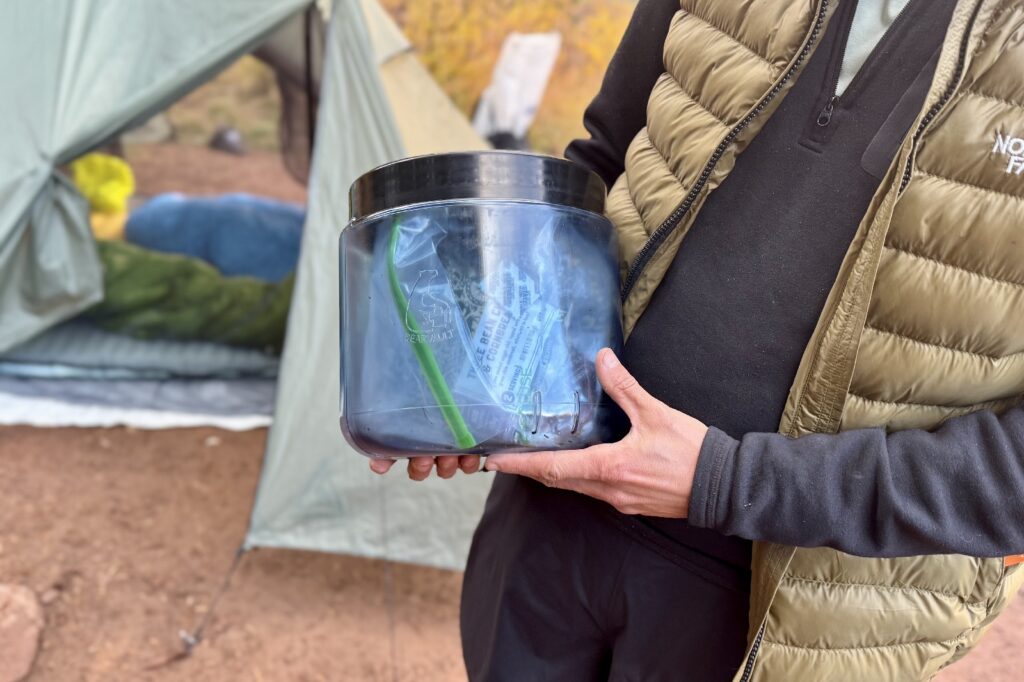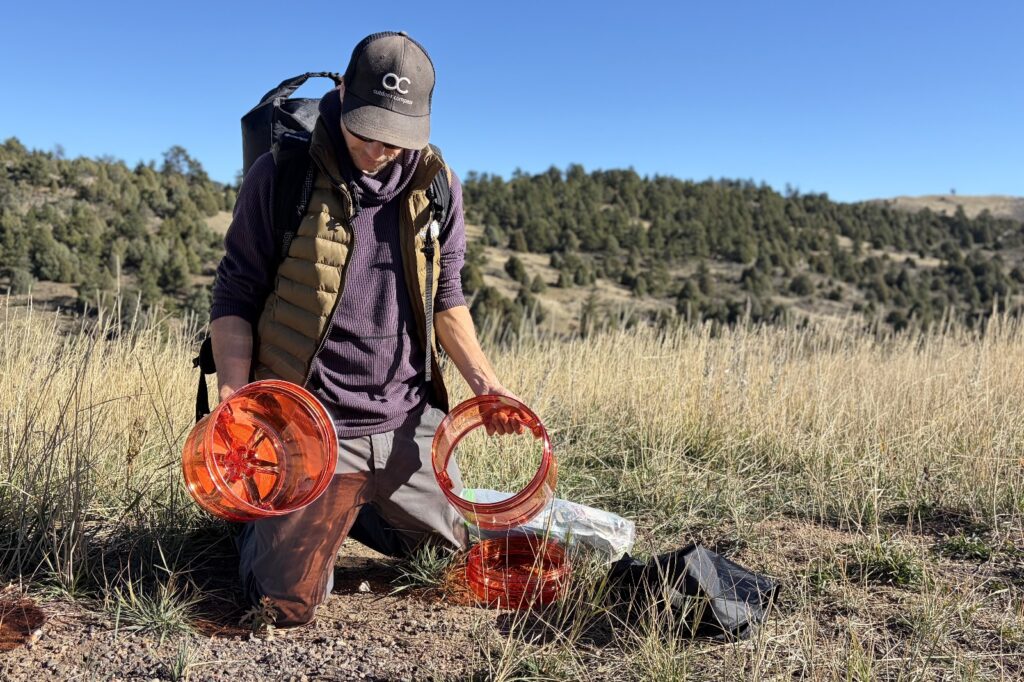
Bottom Line
The Big Agnes Tiger Wall UL2 is a standout shelter for solo backpackers and ultralight pairs who want one of the best backpacking tents when it comes to weight savings and comfort. When you’re splitting the weight with a partner, this model weighs just over a pound per person, but still offers a surprising amount of headroom, lots of pockets for all of your gear, and a fast and easy setup.
Managing Editor, Ben Applebaum-Bauch used this tent extensively on trails like the Continental Divide Trail and the Superior Hiking Trail. CleverHiker Gear Analyst Brett Kretzer also used the Tiger Wall on the GR11 in Spain. The Tiger Wall has proven its durability and efficiency in all summer conditions.
While it excels in weight and convenience, the Tiger Wall UL2 might feel a bit cramped for two hikers, especially on longer trips. If you’re hiking in a pair and prefer a bit more interior space or use wide sleeping pads, we recommend bumping up to the UL3 for increased comfort.
The Tiger Wall’s lack of rainfly vents limits airflow options, making ventilation challenging in humid conditions. This model also requires a bit more care and attention than more durable, heavyweight tents. For us, the weight savings are worth every penny to move fast and light for thousands of miles.
How We Tested
Our team spent hundreds of nights on different versions of the Tiger Wall, from the dry and dusty Continental Divide Trail to the GR11 in the rugged and humid Spanish Pyrenees. We’ve compared every detail of the new Tiger Wall to report on its performance compared to previous versions.
Quick Specs
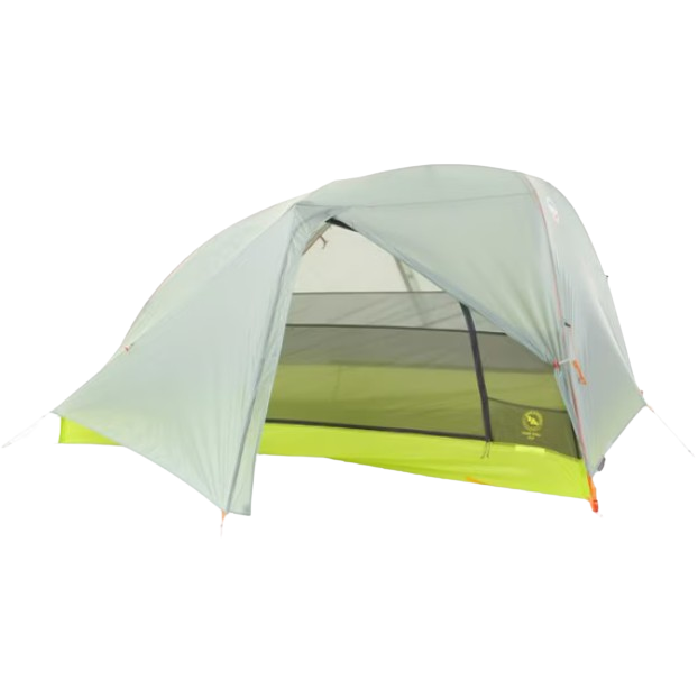
Big Agnes Tiger Wall UL2
Best Semi-Freestanding Tent
CleverHiker Rating: 4.6/5.0
Price: $480
Packed Weight: 2 lb. 8 oz.
Dimensions (LxWxH): 86 x 52/42 x 39 in.
Type: Semi-freestanding
Pros
- Ultralight
- Very useful pocket layout
- Quality construction/materials
- Roomy for one
Cons
- A bit tight for two
- Durability
- No rainfly vents
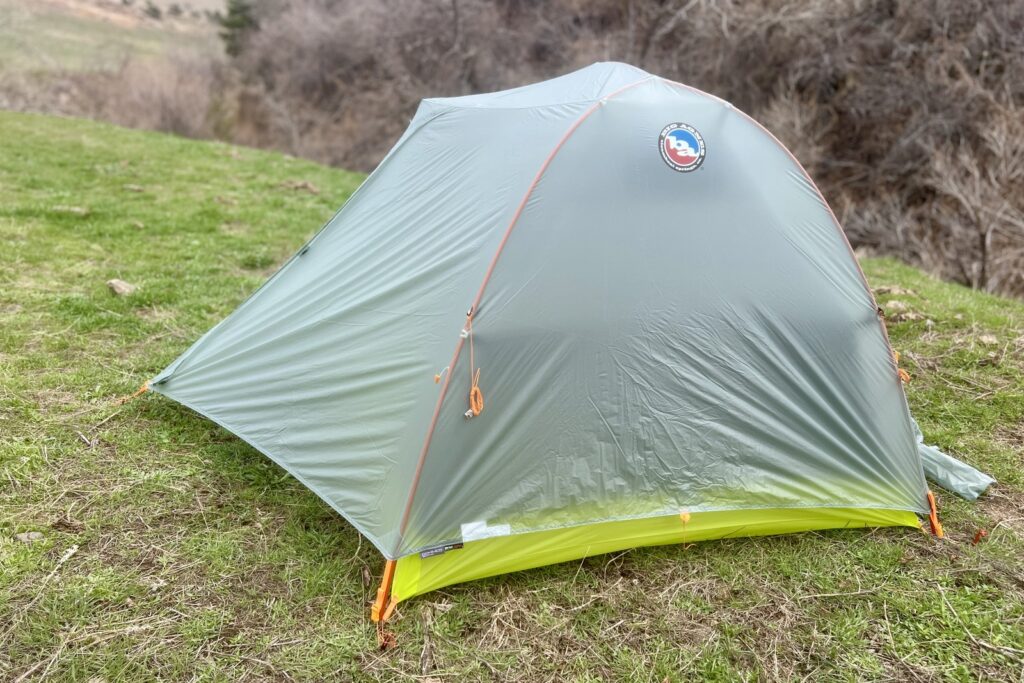
Comfort
The Tiger Wall 2 offers decent comfort and livability for an ultralight, semi-freestanding tent. Its long brow pole opens up the interior space significantly more than a traditional A-frame tent, pulling the sidewalls nearly vertical. This gives the tent a spacious, open atmosphere inside, making it more comfortable for relaxing after a long day on the trail.
With double doors and vestibules on each side (although small), the Tiger Wall 2 provides convenient access and plenty of storage for backpacks and dirty shoes.
We’re especially big fans of the oversized gear loft pocket in the unused space above your legs. This is one of the largest stash pockets on any lightweight backpacking tent we’ve seen, and it’s excellent for keeping bulky essentials like hoodies and puffies off the floor.
The small but functional side pockets add even more organizational options, ensuring that your belongings are always tidy and accessible. A tech port is also included to route charging cables or headphones. The light gray rainfly allows natural light to filter through, creating a bright and inviting environment inside the tent.
Despite its spacious design, the Tiger Wall 2 can feel cramped for two people compared to comparable freestanding options. Gear Analyst Brett Kretzer and his partner opted for the UL3 on a 500-mile hike through the Spanish Pyrenees and were glad to have the extra room during the long trip. The 28 square feet of floor space in the UL2 fills up quickly, leaving little room for gear or movement.
Lastly, the zippers on the Tiger Wall are below average – they’re not as smooth as we’d like, especially on the rainfly. They tend to snag especially easily on a wet fly.
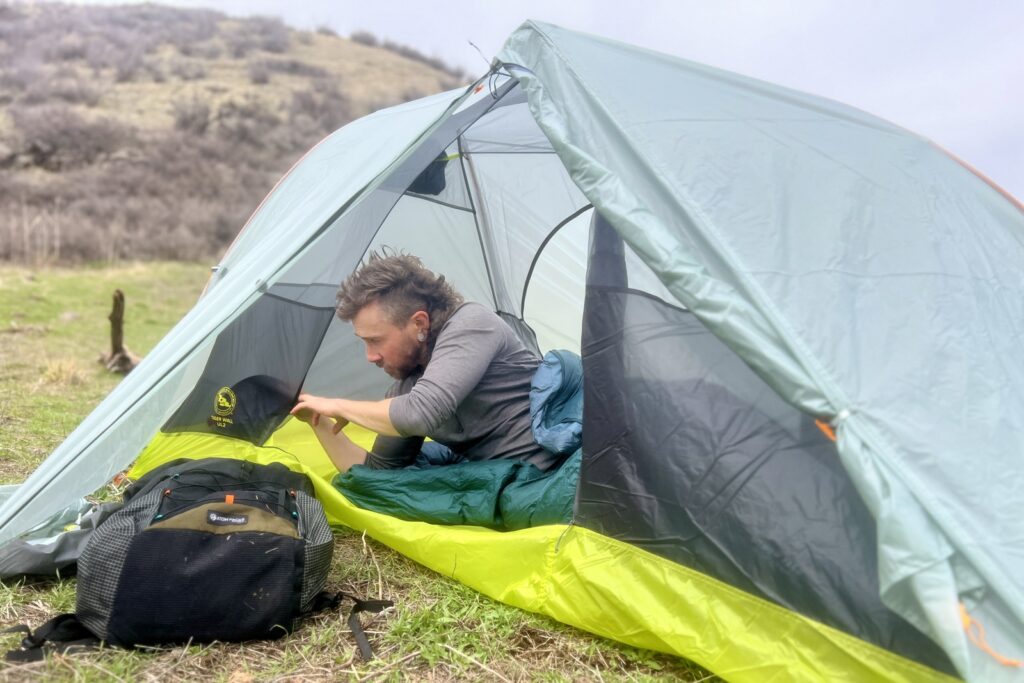
Weight & Packability
The Tiger Wall UL2 is a great way to shed tons of pack weight without sacrificing a lot of comfort. For a double-wall, semi-freestanding tent, 2 pounds 8 ounces is crazy light.
All of the Tiger Walls’ components pack down very small, so it’s no problem fitting the tent body and fly inside your backpack without taking up much space. The pole assembly’s narrow fold allows it to slide effortlessly into an exterior pocket to maximize your pack’s internal storage, and the lightweight nylon material is highly compressible.
This year, Big Agnes has changed its stuff sack design from a standard cylindrical tube to a more envelope-style, side-opening stuff sack with compression straps. This stuff sack is an upgrade for people who like to roll up their shelter like a burrito, but it’s a little more finicky for the ball-it-up-and-stuff-it-in kind of packers (guilty).
As always, the lightweight material responsible for weight savings comes with trade-offs in durability, so you’ll have to handle it with more care. Still, when it comes to ultralight travel, this tent is a dream.
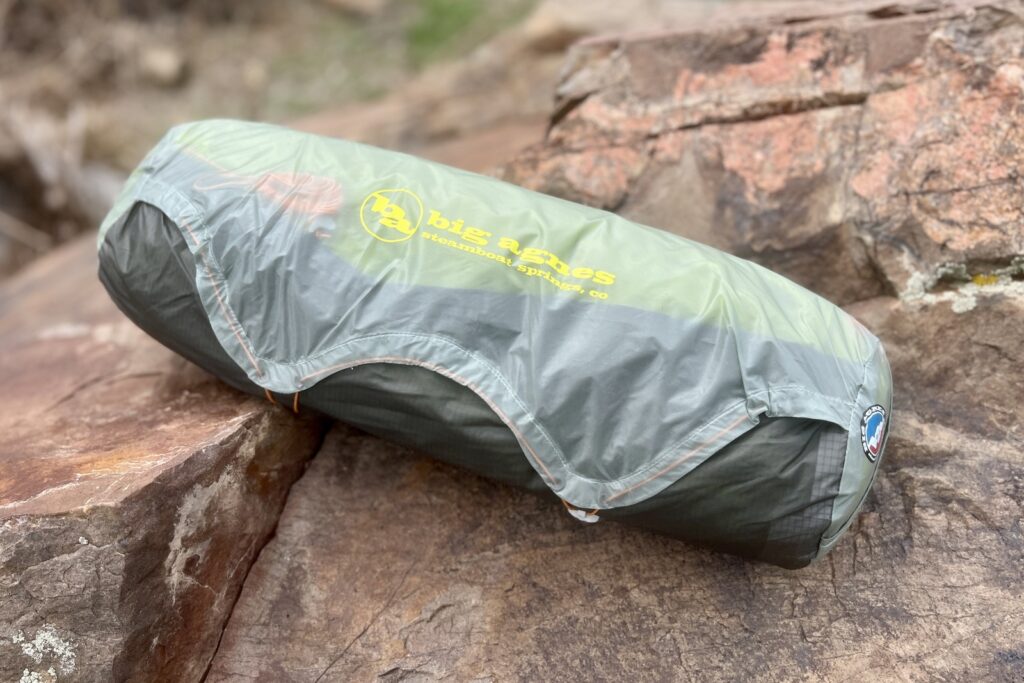
Weather Resistance
Big Agnes beefed up the weather resistance of the new Tiger Wall UL2 with its proprietary HyperBead fabric, which is now stronger and more water resistant than previous versions. To further increase its weather resistance, the entire tent is completely seam-sealed and treated with a 1500mm DWR coating.
The rain fly provides excellent coverage and attaches to the strong but flexible aluminum poles for a stable shelter in the wind and rain. Large door toggles make it easy to roll back the vestibule sides for airflow or bedside views. To manage condensation, you can open the double zippers at the top or bottom of the doors for additional ventilation.
It’s not all sunshine and rainbows, however. The Tiger Wall’s rainfly certainly offers good protection, but there’s no denying that the thin 15-denier fabric tends to sag noticeably in extended exposure to rainstorms, especially when it’s cold. This means you’ll likely need to re-tighten the guylines a couple of times during rainstorms, strong gusts (35+ mph), and chilly evenings to maintain a stable structure and keep your vestibules from shrinking too much.
The Tiger Wall also lacks built-in ventilation ports on the rainfly, which limits condensation control. The top-zipping doors with small rain-blocking hoods offer some ventilation but aren’t effective in heavy rain. It’s still better than a single-walled tent, though.
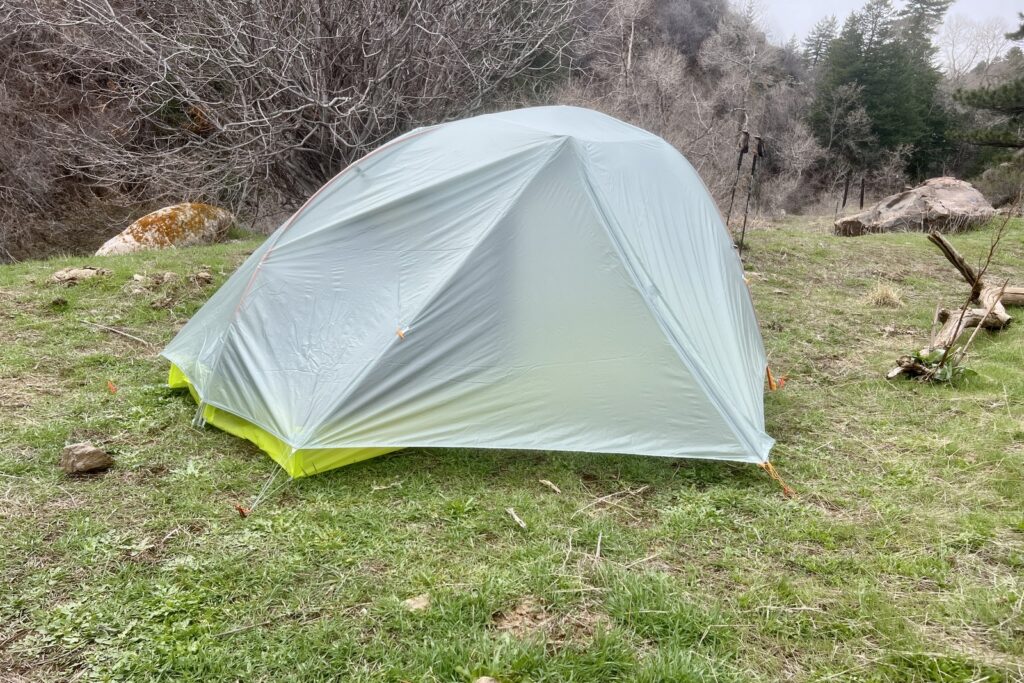
Ease of Setup
Despite its asymmetrical, semi-freestanding design, the Big Agnes Tiger Wall UL2 is easy to set up in just a couple of minutes.
The process is streamlined and easy thanks to its pre-bent poles, reflective guy lines, and an attached brow pole. Color-coded pole ends and grommets simplify correctly orienting the poles and fly. Guy lines and tensioners are pre-attached to the tent, so it’s ready to set up right out of the box, and new rubber tabs connect the fly directly to the brow pole.
During teardown, the tent is so lightweight that it’s easy to move around, shake out, and clean. The footprint (sold separately) allows you to set up the rainfly, poles, and footprint first when the weather is bad, so you can get yourself and your gear out of the weather as you pitch the interior tent. This doesn’t sound like much, but it’s a huge advantage in rainy environments.
Despite its advantages, the semi-freestanding nature of the Tiger Wall requires at least two stakes for proper setup of the foot of the tent, which is slightly less convenient than a fully freestanding shelter. But that’s the trade-off for an ultralight tent.
With every corner and the three additional guy lines staked out, the Tiger Wall holds up decently well in a stout storm. The included tent stakes are solid, but the top notch doesn’t hold guylines in place very well.
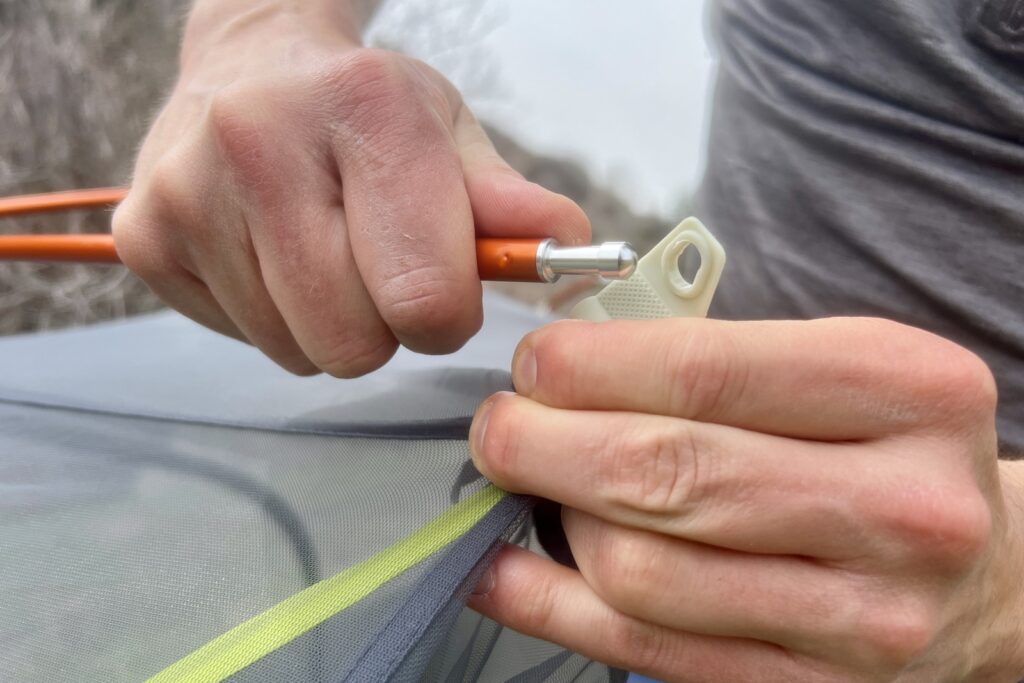
Durability
The Tiger Wall UL2 is one of the more fragile tents on our list of backpacking tents, but that’s the nature of being ultralight. The 15-denier ripstop nylon HyperBead used throughout is an upgrade from previous models, but it’s definitely thin.
Fortunately, the solid construction features quality corner buckles, zippers, and double-stitched mesh that is reliable but featherlight. Plus, the aluminum poles are sturdy and come with a splint for emergency repairs, though in our experience, pole breakages are very rare.
If you frequently camp in harsh environments or are tough on gear, this might not be the best choice for durability. It’s designed to withstand typical use, and our team at CleverHiker put this tent through the wringer over thousands of miles and hundreds of trips – but its lightweight materials require careful handling to prevent damage.
We highly recommend always using a footprint with this tent to protect the floor – you do not want a hole in your floor. That said, the Tiger Wall is well-suited for users who prioritize weight savings and can carefully handle their gear.
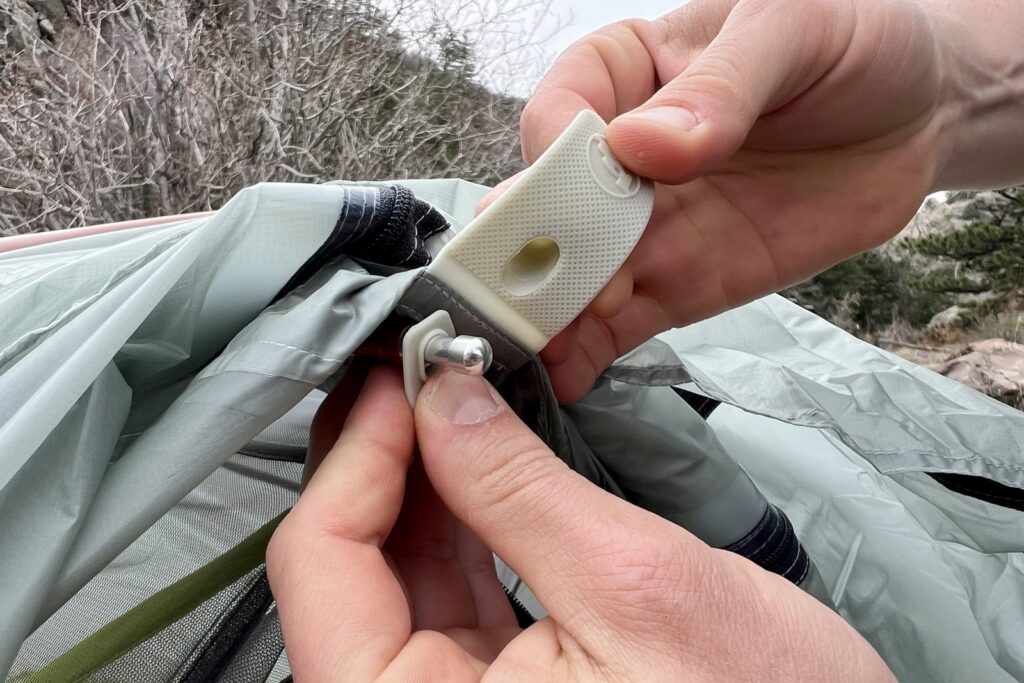
Should You Buy the Big Agnes Tiger Wall UL2?
The Tiger Wall 2 is perfect for solo ultralight backpackers and close pairs who appreciate a balance between weight savings and livability. It’s one of our top choices for folks who want a backcountry shelter that’s easy to pitch, has a ton of room and pockets, and offers decent weather protection without tipping the scales. The tent’s lightweight design makes it appealing for ounce counters who value convenience but don’t mind a bit of a tight squeeze when sharing the space.
However, the Tiger Wall 2 isn’t the best option for pairs of hikers who want more room or prefer a more spacious tent. The interior can feel cramped for two people, especially on longer trips where comfort becomes a priority.
For more room, consider sizing up to the 3-person version—this is CleverHiker Founder Dave Collins’ favorite version for two people. However, it’s not the most durable tent for rough landscapes and adverse weather. Other alternatives may be a better fit for those who often camp with a partner or want a stronger tent during stormy adventures.
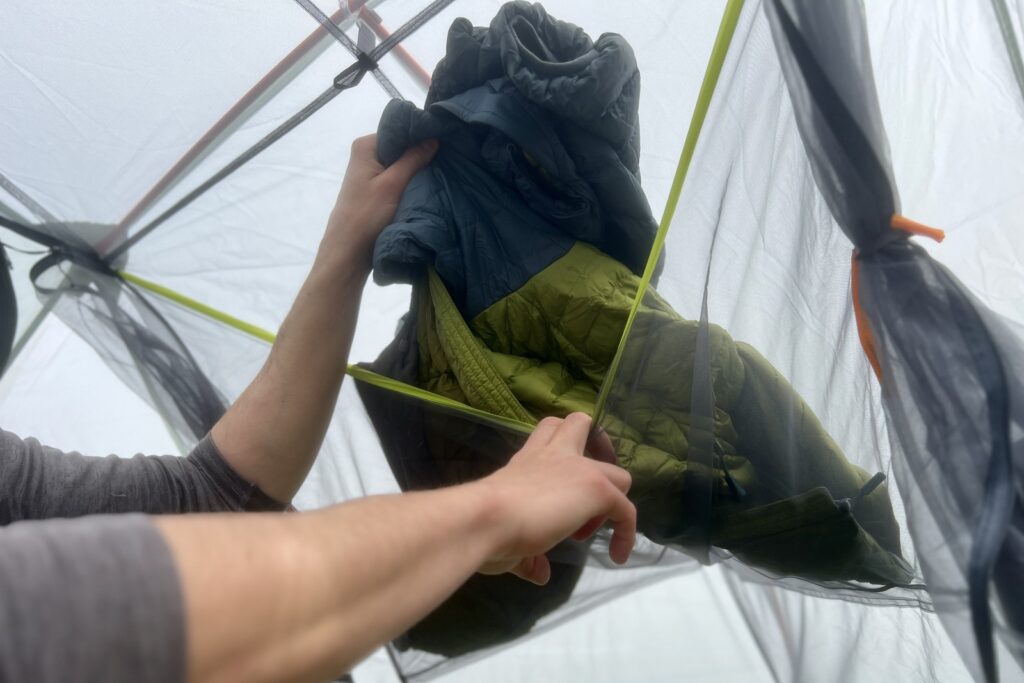
What Other Backpacking Tents Should You Consider?
If you think a more durable or roomy option is better for you, check out our full list of favorite backpacking tents.
Big Agnes Tiger Wall UL3: The Big Agnes Tiger Wall is every bit as comfortable, easy to set up, and organized as the 2-person version, but it offers considerably more space. It’s a couple of inches longer and over a foot wider, so two people can spread out easier, use wide pads, and enjoy more livable space on the trail for only about a half-pound more.
MSR Freelite 2 Review: Like the Tiger Wall, the Freelite 2 is quick to set up thanks to its semi-freestanding design, comes at a similar price point, has more floorspace, and is even a bit lighter. However, it has less headroom and fewer pockets, which might impact storage needs and overall livability when sleeping two hikers.
NEMO Hornet OSMO 3 Review: The Hornet OSMO 3 shares the same semi-freestanding design as the Tiger Wall, but this is a 3-person tent so it’s much roomier. The tradeoff is that the OSMO 3 is a bit heavier and more expensive. This model is better suited for two people who want a ton of interior space.
Big Agnes Copper Spur HV UL 2 Review: The Copper Spur HV UL 2 offers a freestanding alternative with comparable pocket space, more headroom, and an even faster setup. The trade-off is that it’s a bit heavier and comes with a higher price tag.
